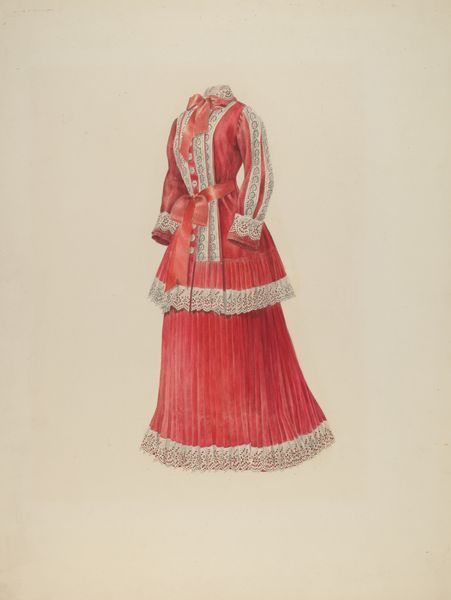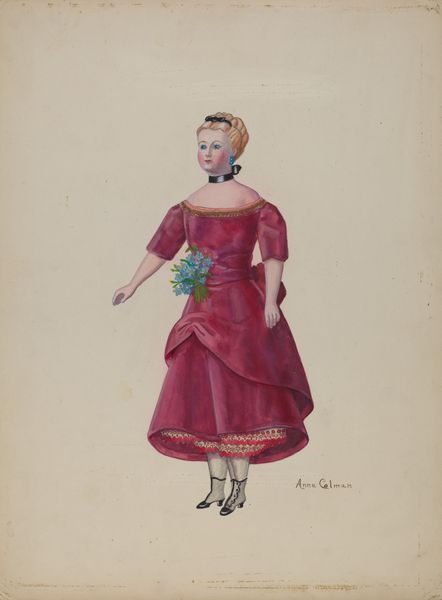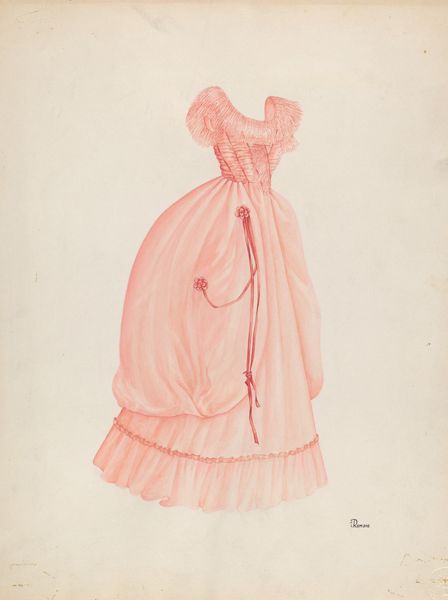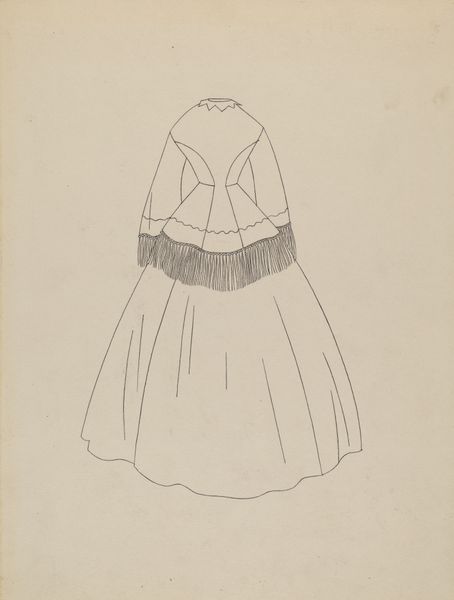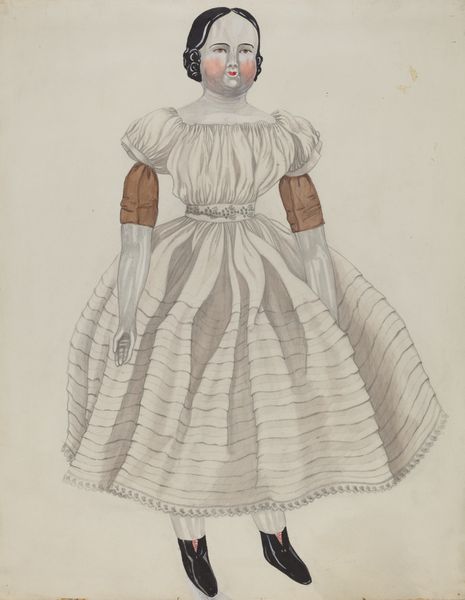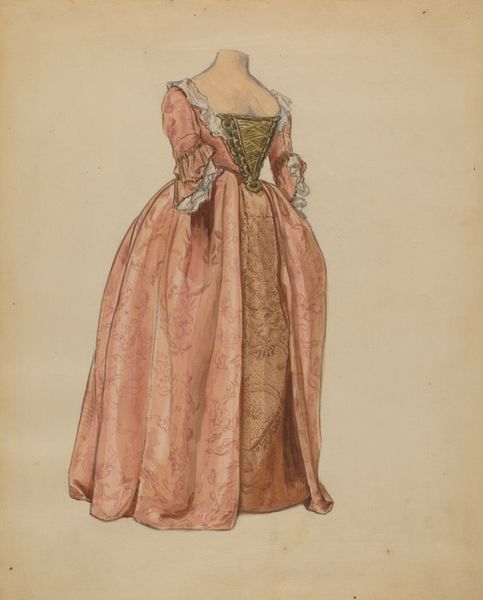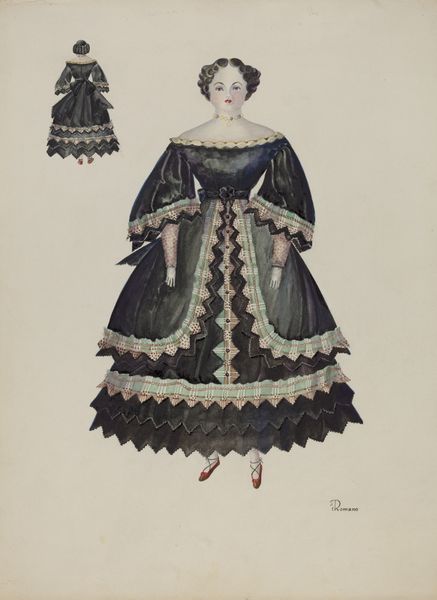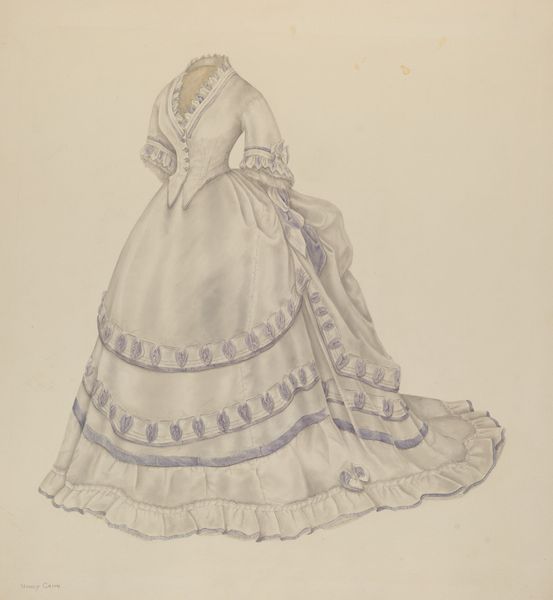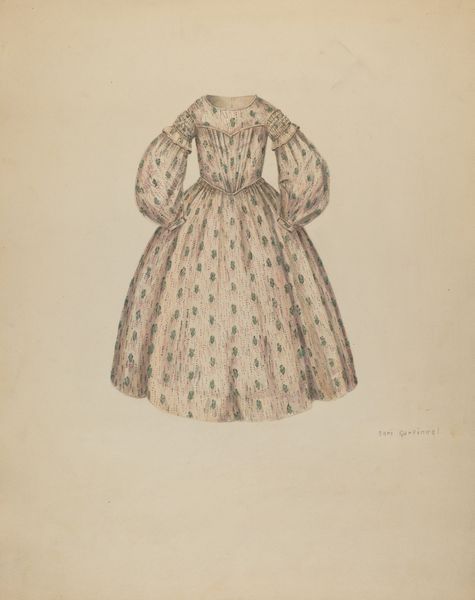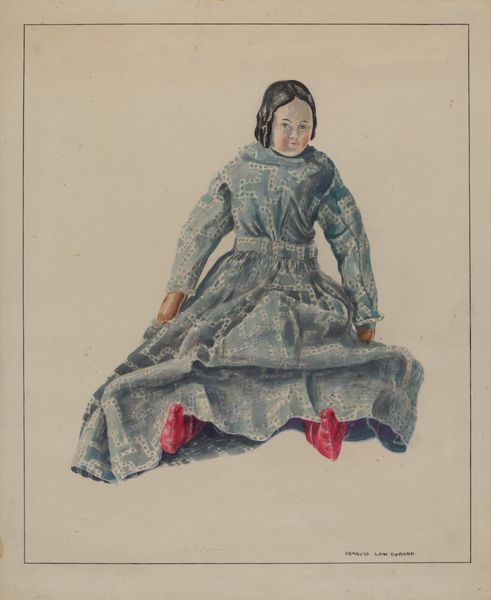
drawing, watercolor
#
portrait
#
drawing
#
figuration
#
watercolor
#
watercolour illustration
#
miniature
#
watercolor
Dimensions: overall: 35.7 x 28 cm (14 1/16 x 11 in.) Original IAD Object: 5" high
Copyright: National Gallery of Art: CC0 1.0
Curator: Here we have Eugene C. Miller's "Pen Wiper Doll," a watercolor drawing from approximately 1937. Its petite scale invites close observation. Editor: It does have a somewhat unsettling feel, doesn't it? The contrast between the faded red and stark black, the doll's fixed stare—it's strangely haunting. The textures of the gown are also fascinating; rough, almost tattered, giving a sense of age and perhaps a discarded history. Curator: The application of the watercolor here speaks volumes about Miller's skill. Observe the gradations of color within the dress, how light and shadow define its form. The artist seems to have intentionally disrupted what might otherwise be sentimental by embracing disquieting juxtapositions. It's not merely a doll; it becomes an emblem, a signifier, a vessel of symbolic meanings relating to girlhood. Editor: Absolutely. When you look at it materially, the very title "Pen Wiper Doll" suggests function, practicality, even subservience. It speaks of a made thing with a life, perhaps mass produced and meant for utility before ending up represented on paper. The contrast with the relatively fine art medium of watercolor adds to that tension, don't you think? Curator: Yes, that contrast is compelling. We might consider, too, how the imperfection of the watercolor – the bleeds and the delicate lines – echoes the very material fragility it portrays. One could decode the interplay of these elements through semiotic inquiry. It prompts us to reconsider how we interpret concepts of 'play', given that this doll seems incapable of eliciting that typical innocence, as you noted earlier. Editor: For me, it's all about labor and access. These materials, readily available versus a fine art oil or bronze... I wonder about the hand that made the real object in the illustration, the hours, the social station. Was the maker known or anonymous? A skilled craftsperson or exploited labor? These questions give the image heft beyond mere representation. Curator: Interesting considerations, indeed. In effect, what initially presents itself as an objective rendering transforms into an allegorical statement about representation itself. Editor: Well, whether symbolic form or index of industry, the little drawing invites you to delve more deeply. Curator: Indeed, Miller provides plenty of visual pathways toward diverse lines of inquiry.
Comments
No comments
Be the first to comment and join the conversation on the ultimate creative platform.
